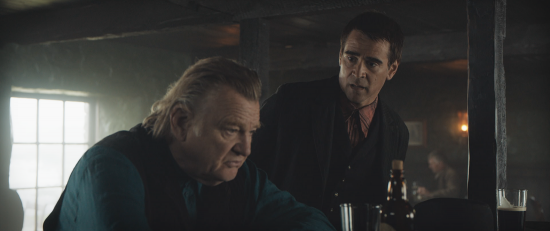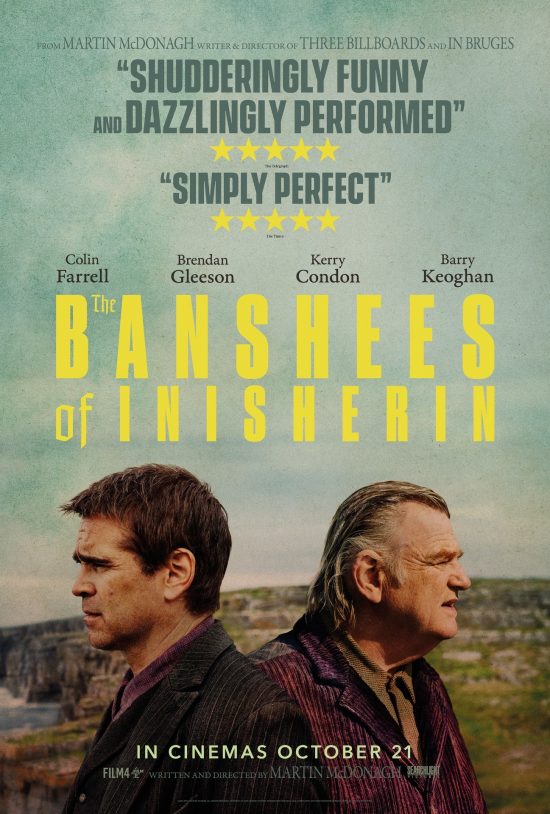LFF 2022 Review: The Banshees of Inisherin is brilliant
Martin McDonagh’s work feels spare. His gift for economical storytelling creates believable characters in minimal screen time. These personas are as imperfect as they are crushingly familiar. Not hindered by convoluted backstories, they’re everymen who know that life is a brief tragicomedy.
McDonagh is also sparing in his endings, mostly refusing to provide traditional energetic climaxes. His endings arrive following a character’s internal resolution. He doesn’t focus on events, only the impact of events on people. McDonagh’s characters live full lives without us watching.
Banshees concerns Pádraic’s (Colin Farrell) life on an island off the Irish mainland. It’s 31st March 1923. Pádraic sets off from the smallholding he runs with sister Siobhán (Kerry Condon) and their pet mule. He visits drinking buddy Colm (Brendan Gleeson), expecting to make their usual trip to the pub. But Colm ignores Pádraic’s knocking. Spaniel at his feet, surrounded by instruments and marionettes, Colm will not budge. These two men already look like an odd couple. Later, drinking alone, the publican asks Pádraic, “have you been rowing? It sounds like you’ve been rowing.” Pádraic is at a loss. Siobhan, the local cop, even village idiot Dominic (Barry Keoghan) can see that something has changed. Pádraic becomes driven to discover why Colm has stopped speaking to him. Colm insists on being left alone. Banshees is about this human conflict. What happens when one man’s determinism meets another’s stoic defiance?
No, that’s not right. Banshees is about so much more. It examines male friendship, touching on social rules and failed communication. It’s about Siobhán’s dreams and the power of small-town rumour-mongering. It’s about Dominic’s innocence. It’s about Colm’s need for legacy. It’s about separating art from artist. It’s about Pádraic’s desire to do no harm, while doing harm. It’s about what it means to be good. It’s even a little bit about portents and sorcery. Every character endures a private struggle and every actor sells that struggle effortlessly.
Somehow, Banshees is also the best allegory for modern western living. That chronology isn’t accidental, it marks the tail end of the Irish Civil War. All the characters know there’s a nearby conflict, but conclude that they’re safer out of it. They have the freedom to choose to obsess over their private hopes and agonies instead. Sound familiar?
The Banshees of Inisherin is funny, sad and finally, hopeful. This small, discrete drama smuggles a large-scale meditation on the meaning of life. In fact, it isn’t spare at all.











